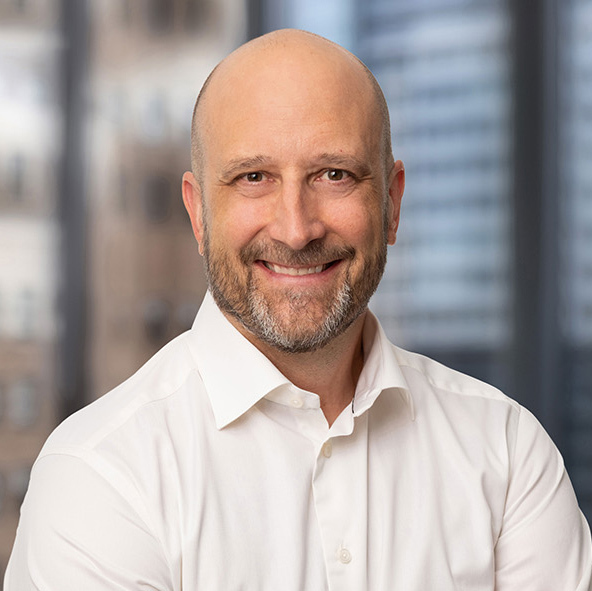May 16, 2022 | Quiet Counsel | 9 min read
Pros and Cons of Private Asset Investing
Private assets, also known as real assets or alternatives, have grown in popularity over the past 20 years, with assets under management ballooning from $2 trillion in 2010 to over $6 trillion globally today1 and Canadian pension plans expanding their weight in private assets
from 6% in 2000 to over 30%.
Given all the activity, in 2015 we began examining what all the hype was about to determine if it was justified. The result of that work has led to Leith Wheeler launching two infrastructure funds and a third, more diversified private asset fund launch being finalized, many conversations with subadvisors and clients, a video segment in our recent Outlook 2022 webinar, and this edition of Quiet Counsel. But we’re getting ahead of ourselves. Let’s start
at the beginning.
What are private assets?
Investing in private assets is nothing new – quite the contrary. Aside from informal merchant agreements, direct private investment was the only game in town until public stock exchanges popped up in Amsterdam in 1611 and later London and New York.
The common characteristic of private, real or alternative assets is they are illiquid, which means there is no readily available public market on which to trade them. Illiquid asset strategies can be broken down into several asset classes, the most common of which are private infrastructure and private real estate. Other classes include private equity, private debt or mortgages, hedge funds, and commodities. Collectibles like art or intangibles like Bob Dylan’s music catalogue can also sometimes be considered private assets, insofar as they are considered an investment and they are certainly illiquid!
Private Asset Categories
Over the past 15 years, private assets have been growing almost exponentially in popularity for a number of reasons, principally:
- Past success of these strategies. Large institutional investors like the Yale Endowment and Harvard Investment Corp have shown great success investing in private assets over the past two decades and (unsurprisingly) other investors have been keen to emulate this success.
- Low bond yields. A secular bond bull market has produced great performance but has now left government bond yields (see Figure 1) and expected returns hovering in the 2-3% range. hile strategies to exceed this do exist within the asset class, some investors have decided to reduce their exposure and pursue alternative investments as a means of boosting yield.
- Increased accessibility. With the increasing popularity of private assets, the investment industry has responded by making more private asset investment vehicles accessible to individual investors.
Figure 1: 30 Years of Government of Canada 10-Year Bond Yields, 1991-2021

Why own private assets?
Investors are looking to private assets for enhanced returns and an additional source of diversification in their portfolio. Specifically, because private assets trade at lower values than their public counterparts, applying income to a lower base generally results in higher cash flow yields. When taken together with capital gains, investors are compensated for the illiquidity risk they take to participate. As part of that equation, inflation protection may be afforded to greater or lesser degrees. The increased diversification means the private assets may zig when other investments zag, thus lowering your portfolio’s overall risk.
These benefits sound great, but at what cost? You have heard us say many times before that there are no free lunches in the investing world – meaning if you don’t see the added risks from increased returns, you need to look harder. There are a number of risks to consider:
- Illiquidity. Investors should start by asking, am I getting compensated enough by the ‘pros’ mentioned above for the liquidity I am giving up? Can I afford to give up the amount of liquidity I am considering? The upside of taking on this risk is historically it tends to be compensated, as the income earned provides a higher yield per dollar of capital invested, which over time, really adds up.
- Lower information transparency & regulatory oversight. These two go hand in hand as they a) make it more difficult for investors to do their due diligence, and b) result in less investor protection.
- Pricing. Unlike public securities, which are priced directly by market participants, private assets by their nature must be priced by the fund managers themselves. While managers are governed by process standards, periodic audits and third-party verifications, there remains some risk that assets are valued incorrectly or inconsistently.
- Access. Very high minimums can make accessing private asset strategies difficult. For Leith Wheeler’s first two infrastructure funds, regulators would not permit us to sell to clients with less than US$5 million in investable assets.
- Timing of investment deployment. Private asset funds have a lifecycle that includes periods when investor cash is deployed in productive assets, and when it is not. At the beginning, it is common for there to be a period before the committed capital is “called” and investor funds are uninvested. This can create cash drag or muddy the waters of the overall performance of the private asset fund(s).
- Timing of investment return. For closed end funds, you do not control when you will receive your capital back and for open-ended funds, timing of any redemption request is usually up to the manager’s best efforts.
- Fees. Private asset strategies tend to attract a higher fee schedule than traditional strategies.
- Valuations. Given the popularity of private assets in the past 5 years, the prices of the underlying assets have gone up, so investors need to be aware of the risk of entering a crowded area where returns may not be what they have been in the past several years
because of higher prices.
The volatility myth
One must be careful not to overstate the stability of private assets as some of the dampened volatility comes simply from the fact that they are priced less frequently. Figure 2 illustrates this phenomenon well. In it, three recent years of daily closing prices for the S&P/TSX Composite Index are shown, with the year-end prices highlighted. The index clearly underwent significant swings in value intra-year – especially in pandemic-impacted 2020 – but if you could only ever see the value each December 31, you wouldn’t have known. Does this make the asset inherently less volatile?
Figure 2: S&P/TSX Composite Index Performance, Jan 1, 2018 – Dec 31, 2021 (Daily, Annually)

A similar phenomenon applies with private assets. With less noise – no daily portfolio valuation to worry over when the market surges or retreats – it’s easy to conclude that private assets are more stable. But it’s important to remember that’s just a function of the measurement, not the underlying characteristics of the investment.
The fact of the matter is the increased access to market data and the decreased barriers to trade in public markets over the last few decades have in fact worsened average investor outcomes. To this, private asset structures may offer an advantage.
Some groups who do benefit from the optical smoothing of private investment returns are institutions like foundations, endowment s, and pension plans. Because they base their distribution or solvency calculations on some measure of market value, the steadier the perceived market value, the steadier the required distributions or pension adjustments.
Are private assets stocks or bonds?
Unfortunately, some actors in the industry sell the less volatile nature of private assets as a replacement for bonds, which they are not. They do possess bond-like qualities such as high cash flows which are generated from stable, long-term assets – but at the end of the day, (for all but private debt) legally they represent direct ownership of an asset. That means, like public equities, they get paid after everyone else, including debtholders.
With that said, there are some differences within the asset class. For example, infrastructure and real estate tend to be very long term in nature, with equally long contracts tied to them. They are generally low-growth assets, so investors look to them for cash flow plus an inflation hedge. Relative to private equity, this inherent stability enables these sub-sectors to behave more like bonds in some key ways.
A final important consideration here is to revisit the topic of risk and liquidity. When equities were down sharply in March 2020, as a firm we sold $750 million of liquid bonds that held their value and/or appreciated in the early days of the pandemic to fund a timely rebalance into equities that became cheap overnight in the indiscriminate market sell-off. This is something we would have not have been able to do with private assets. In volatile times like these, bonds still reign supreme.
How to invest in private assets
More interest in private assets will continue to attract new entrants but few will have the scale to participate in the largest (and possibly most fruitful) opportunities, the ability to negotiate favourable contracts and lending terms, and the ability to add value to the asset. Top-tier private asset firms have very specific investment and operational acumen, decades of experience, and size which are table stakes to even see the more strategically or economically important assets or deal flow. At the same time, money flowing into the space is creating bidding wars for smaller and easier opportunities, hampering those funds’ potential for generating returns. As such, when investing in private assets, we recommend investors focus on top-tier private asset firms.
Unfortunately, these firms tend to have the longest queues and highest minimum investment requirement, with some as high as $10 million. For this and other reasons, we are targeting the launch of the Leith Wheeler Private Asset Fund for this June. By aggregating our clients’ interest in private asset strategies, we are able to provide access to these top-tier firms for our clients at a much lower minimum investment. We are partnering with private asset firms that, like Leith Wheeler, have a value-style approach to investing, a high degree of employee ownership, a client-first focus, global reach, and have a proven track record in what they do.
Our clients often ask us what a sensible allocation to private assets might be. Holding all other variables static and only varying risk and return, an allocation to private assets of between 5-20% of a balanced portfolio seems sensible if you can assume the illiquidity risk. With a minimum investment of US$250,000 (as is the case in our pending fund), this would equate to a minimum portfolio size of C$1.5 - $6.3 million. Also, accredited investor rules require most investors have more than C$1 million of investible assets.
The Leith Wheeler Private Asset Fund
With experience beginning with investment in public securities (including the 2012 Initial Public Offering of Brookfield Infrastructure Partners LP), along with launching both closed-ended (2018 - LW Infrastructure Fund I) and open-ended funds (2019 - LW Infrastructure Fund II), we feel the upcoming LW Private Asset Fund (target launch: June 2022) brings to the table a combination of research, relationships, diversification, scale, and access to top tier private asset firms. The target structure is to own:
- 30% - 50% in core infrastructure
- 30% - 50% in core private real estate
- 10% - 50% in core private debt and other strategies
If you’re interested in learning more, please reach out to your portfolio manager.
1KcKinsey & Company. “Private markets rally to new heights.” McKinsey Global Private Markets Review. March 2022.
IMPORTANT NOTE: This article is not intended to provide advice, recommendations or offers to buy or sell any product or service. The information provided is compiled from our own research that we believe to be reasonable and accurate at the time of writing, but is subject to change without notice. Forward looking statements are based on our assumptions, results could differ materially.
Reg. T.M., M.K. Leith Wheeler Investment Counsel Ltd.
M.D., M.K. Leith Wheeler Investment Counsel Ltd.
Registered, U.S. Patent and Trademark Office.






